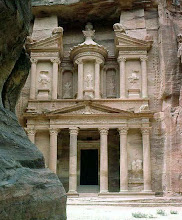This blog is short and sweet. I have recently updated my exhibit design website to include my preliminary ideas for projects. One idea is a visualization of US Civil data, specifically contrasting European immigration and settlement with the interstate migration of Slave Labour in the decades leading up to the civil war. My other project is turning an old tabletop hockey game into an interactive history machine. I am still unsure of how to model this metamorphosis but I am excited for this work! Check out the site for more detail, a more substantive blog is on the way! http://sites.google.com/site/jordanuwoexhibitdesign/home
Monday, January 18, 2010
Wednesday, January 13, 2010
Processing - drawing is fun
I have just finished my first ever all digital drawing using open source software Processing. I am not much of an artist but this software is relatively easy to get a handle on. The online tutorials and suggestions from other users really allow to dive right into the application and begin fiddling around. I started by drawing simple shapes: lines, rectangles and ellipses. When these simple shapes are combined in an artistically creative way they can produce complex picture. I instantly remember the lessons of Mr. Lombardo, the art teacher played by Jon Lovitz on The Simpsons. When instructing Marge on painting, he explains that objects, people and animals are no more than an interconnected series of polygons. I feel as though Processing really allows an amateur, or in my case novice, artist a chance to experiment with simple shapes to produce ever more complex pictures. For the public historian skills such as digital drawing may not seem all too important, however when creating a website or online exhibit the ability to create original graphics can become very important indeed. Whether it be creating a logo for a particular institution or exhibit or even creating an entire landscape image to represent a physical reality, public historians ought to be able to use creative outlets for the production of historically relevant material. Although this takes some time, open source software and networks such as Processing make this type of education accessible for anyone with the motivation to learn.
Here is the source code for my first drawing done in Processing. Unfortunately at this time I am unsure of how to transfer my picture to a viewable form, but rest assured I will find this out soon and share my art with you!
size(200,200);
rectMode(CENTER);
rect(100,100,18,90);
ellipse (100,70,50,50);
ellipse (91,65,8,5);
ellipse (109,65,8,5);
ellipse (100,85,6,3);
ellipse (74,71,4,6);
ellipse(126,71,4,6);
line (90,145,80,160);
line (110,145,120,160);
line (90,115,70,110);
line (110,115,130,110);
line (100,73,98,77);
line (98,77,101,77);
ellipse(68,109,4,4);
ellipse (132,109,4,4);
ellipseMode(CORNERS);
ellipse(120,160,130,163);
ellipseMode(CORNERS);
ellipse(70,160,80,163);
line (100,45,95,40);
line (100,45,105,40);
line (95,46,90,41);
line (95,46,100,41);
line (90,47,85,42);
line (90,47,95,42);
line (105,46,100,41);
line (105,46,110,41);
line (110,47,105,42);
line (110,47,115,42);
line (85,48,80,43);
line (85,48,90,43);
line (115,49,110,43);
line (115,49,120,43);
Labels:
Digital Drawing,
Processing,
UWO Digital History
Saturday, January 9, 2010
New Website (another one!)
I just wanted to share my new website documenting my involvement in my Interactive Exhibit Design Course with Bill Turkel at UWO. This course is going to be challenging and exciting as me and my fellow classmates will be creating and producing physical and digital exhibits linking technology and history together. The goal is to create something informative, interactive and novel. Every sketch, idea and blueprint that I come up with will be located on this site so please feel free to follow along here. For now my ideas are pretty basic but hopefully they evolve into something truly extraordinary!
Subscribe to:
Comments (Atom)
